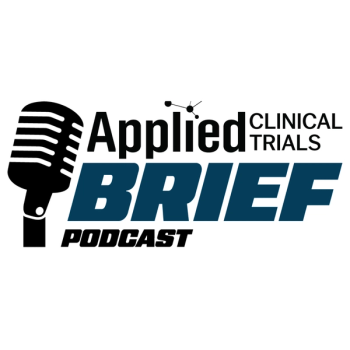
Accelerating Development Through Parallel Execution and Rigorous Quality Controls
Learn how early regulatory engagement, validated digital systems, and robust protocol design enable biotechs to run parallel studies without compromising compliance or data integrity.
In a recent video interview with Applied Clinical Trials, Ben Edwards, chief operating officer, Avance Clinical, discussed common challenges in biotech, emphasizing the importance of addressing preclinical package gaps to avoid delays. He highlighted the need for CROs with deep scientific capabilities to create a sound scientific argument for new drugs. In the current funding climate, he stressed the importance of obtaining patient data early to inform decision-making. Edwards also noted the shift towards adaptive trial designs and the benefits of staying with the same CRO for continuity. Effective coordination across functions requires integrated teams and data visualization. Parallel execution strategies, combined with rigorous protocol design and early regulatory engagement, can accelerate development while maintaining compliance.
ACT: How are biotech teams using parallel execution strategies to speed up development timelines while maintaining compliance and data quality?
Edwards: It's a two-part question. One is about the parallel execution strategies, and we have spoken quite a lot about those, really ensuring that teams are thinking about adaptive design right from the outset of the projects. Again, thinking about healthy volunteer studies, having patient groups at the end of those to get patient data, and then parallel sequencing of different phases of studies is something that can be also achieved. For example, you could have a fast track where you're going from Phase I study, small patient cohort, an expanded Phase IIa and then IIb program. You may also need to do in parallel drug interaction studies, as you're undertaking that phase two a study. It's really thinking about the parallel sequencing of the phases of the study and getting that emerging data so that you can start planning your next study and not waiting right until the end, until you've got the clinical study report in hand.
I think that's a real opportunity for biotechs to save time and to really accelerate the development of their program, but obviously they need to make sure they've got the right quality controls in place. I think that comes down to a number of different elements. I would firstly say protocol and planning rigor, making sure that they have a really detailed, upfront protocol design that is collecting the parameters and the data that they need, not additional data that creates noise. I think sometimes that noise can create decision challenges in terms of programs.
The other part would be early and regular regulatory engagement, so making sure that as they're starting their program, wherever they're starting it, whether they're accelerating through Australia, even still, having early conversations with the FDA or the EMA, to ensure that their program is on track and going to deliver the data that the regulator expects to see. That's all about controlling the quality of the design of the program while looking after the speed of the program too because obviously, if you're accelerating it through parallel design, that's great, but if it's not going to be accepted by the regulator, that's going to obviously impact timelines.
I think then also having really strong governance and oversight, and I mentioned before data visualization to ensure that at the biotech companies, there's really a—for lack of a better word—an independent monitoring group that's really looking at the data, looking at the progress of the program, to ensure that it's of quality and the data that's been collected is high quality.
Lastly, in my view, it's about using systems that are fully validated, and that's really important today, making sure that the suite of systems that have been used on the study are really high standard, but also have the right validation package in place to protect the validity of the data, things like, you know, 21 CFR Part 11 compliance. That's one thing, but making sure your EDC systems, your CTMS and eTMF are fully validated, as an example, will really help protect that ultimate quality of the data that's been collected.
Newsletter
Stay current in clinical research with Applied Clinical Trials, providing expert insights, regulatory updates, and practical strategies for successful clinical trial design and execution.






.png)



.png)



.png)
.png)
